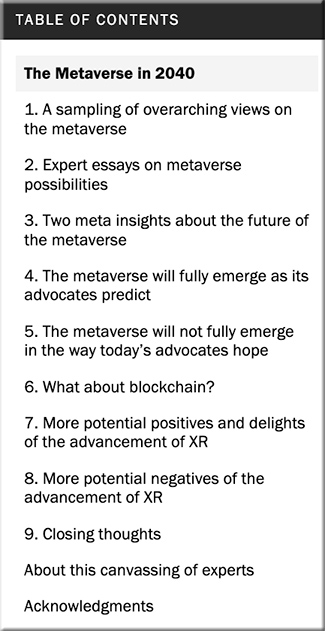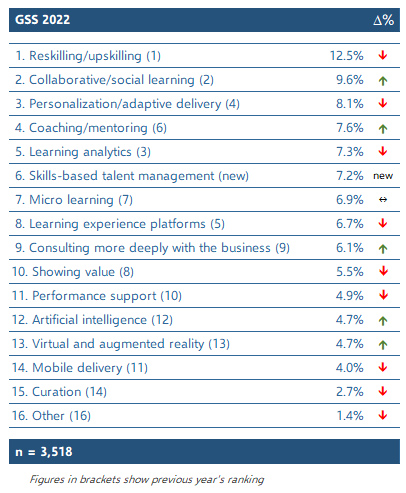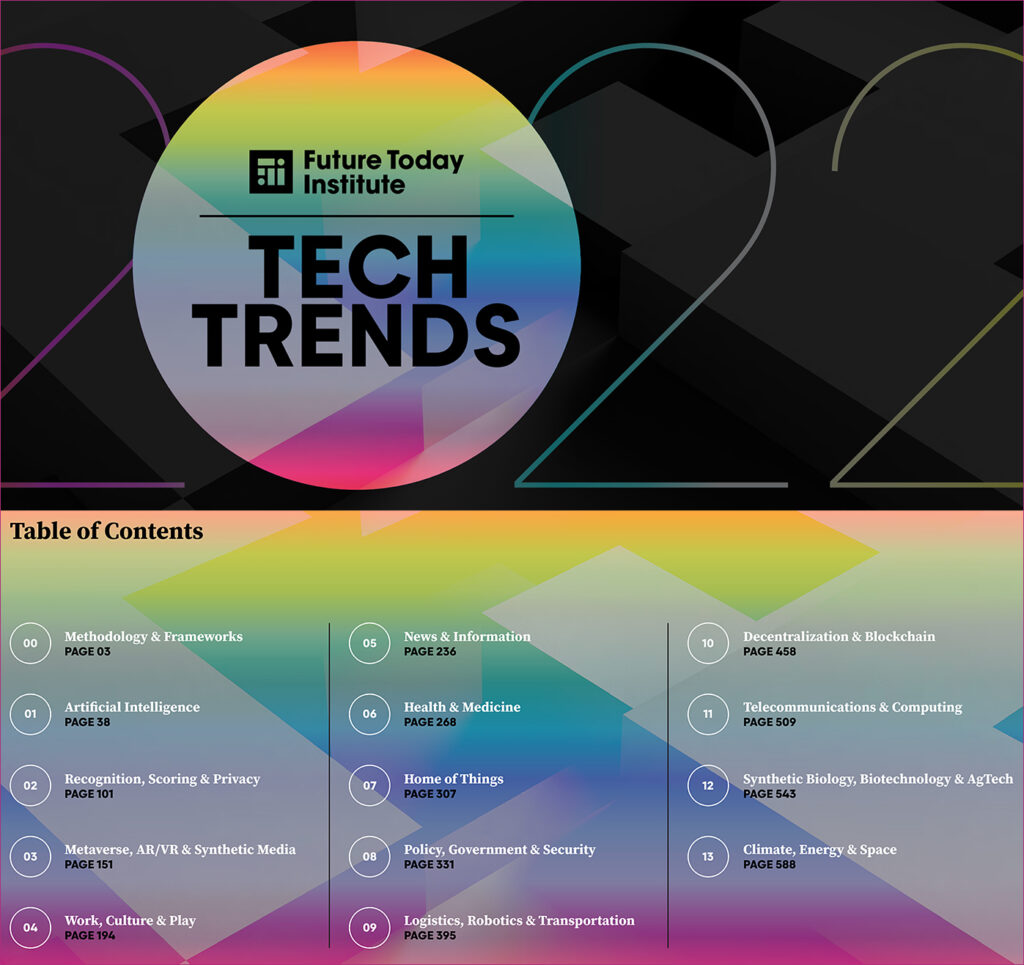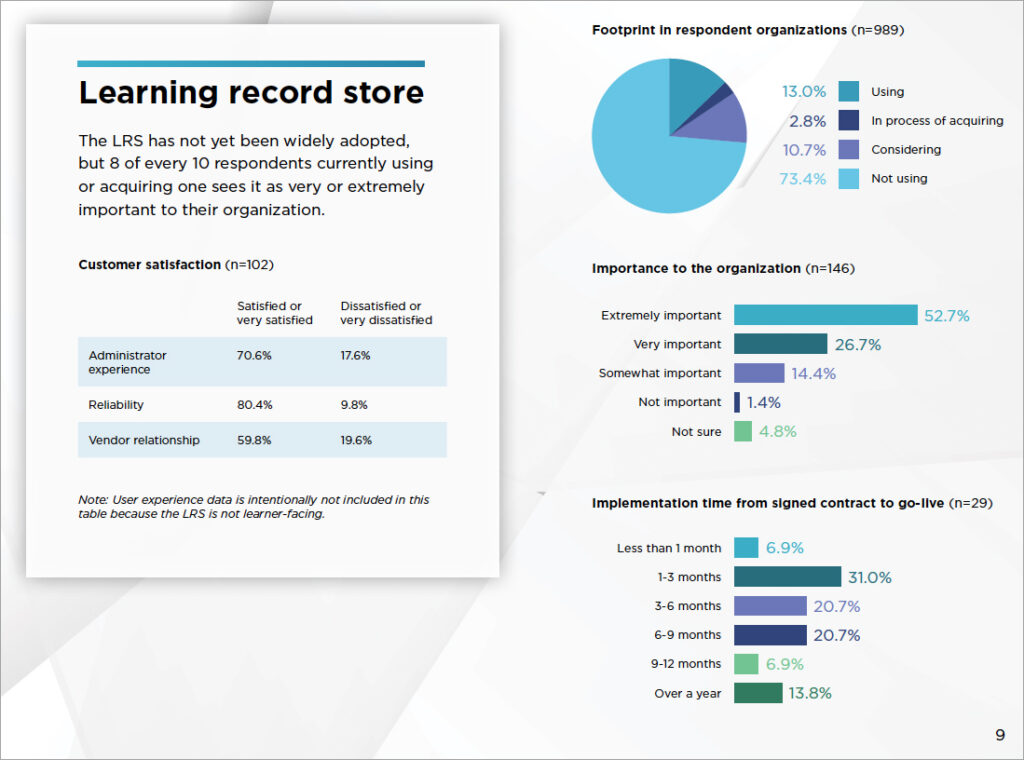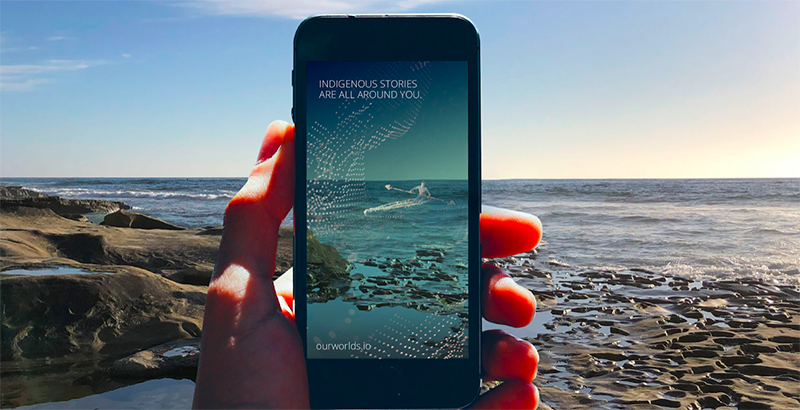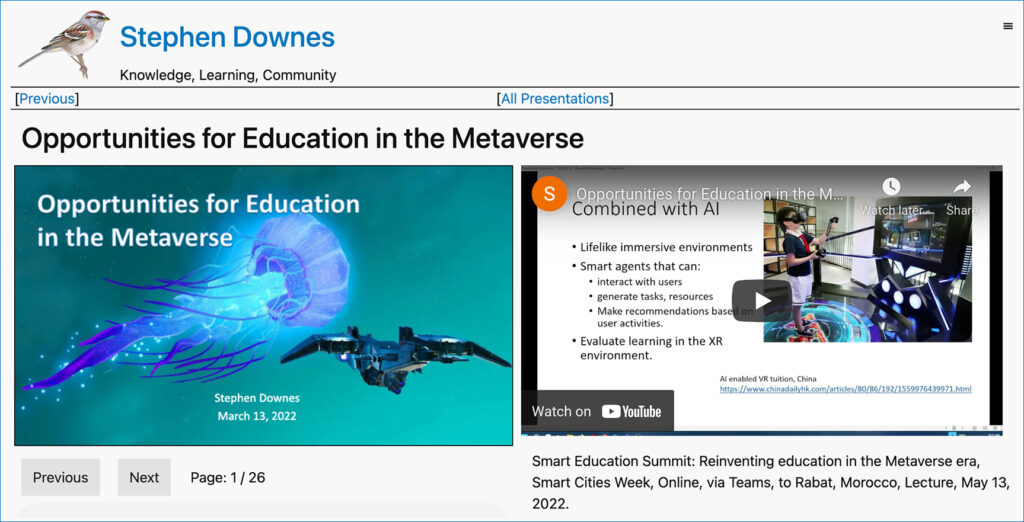The Metaverse in 2040 — from pewresearch.org by Janna Anderson and Lee Rainie
Hype? Hope? Hell? Maybe all three. Experts are split about the likely evolution of a truly immersive ‘metaverse.’ They expect that augmented- and mixed-reality enhancements will become more useful in people’s daily lives. Many worry that current online problems may be magnified if Web3 development is led by those who built today’s dominant web platforms
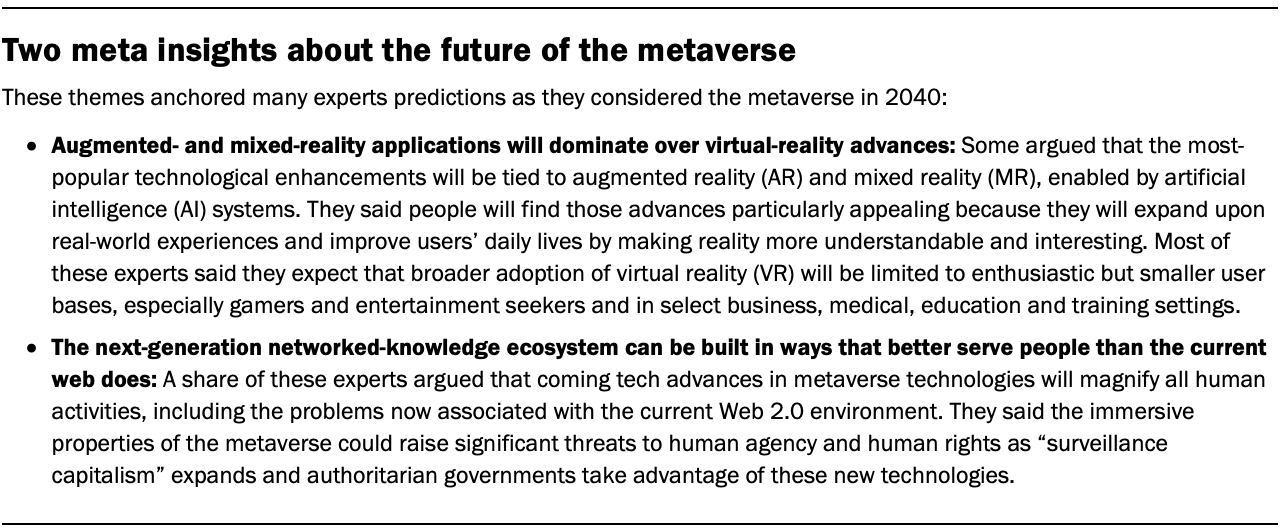
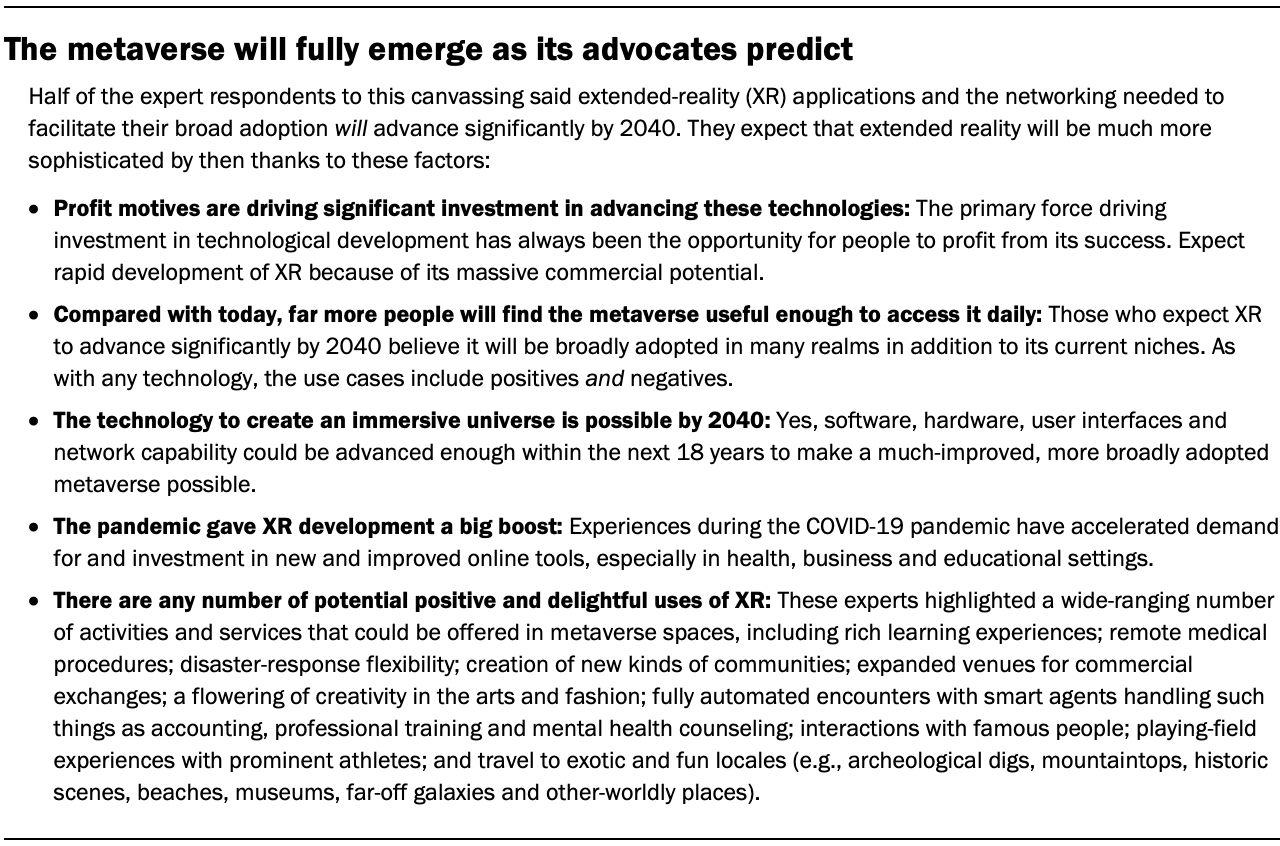
The metaverse will, at its core, be a collection of new and extended technologies. It is easy to imagine that both the best and the worst aspects of our online lives will be extended by being able to tap into a more-complete immersive experience, by being inside a digital space instead of looking at one from the outside.
Laurence Lannom, vice president at the Corporation for National Research Initiatives
“Virtual, augmented and mixed reality are the gateway to phenomenal applications in medicine, education, manufacturing, retail, workforce training and more, and it is the gateway to deeply social and immersive interactions – the metaverse.
Elizabeth Hyman, CEO for the XR Association









